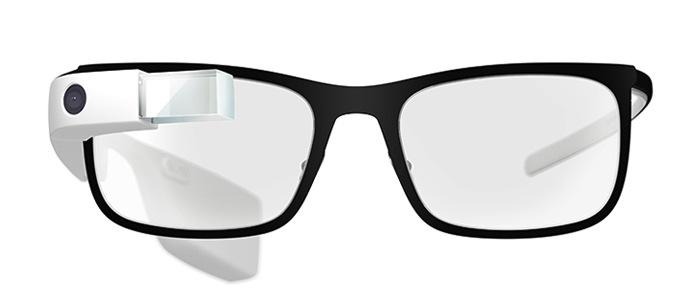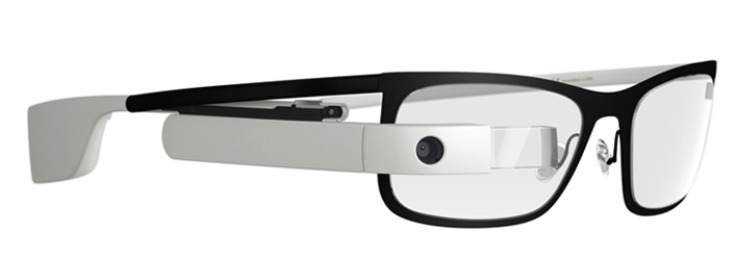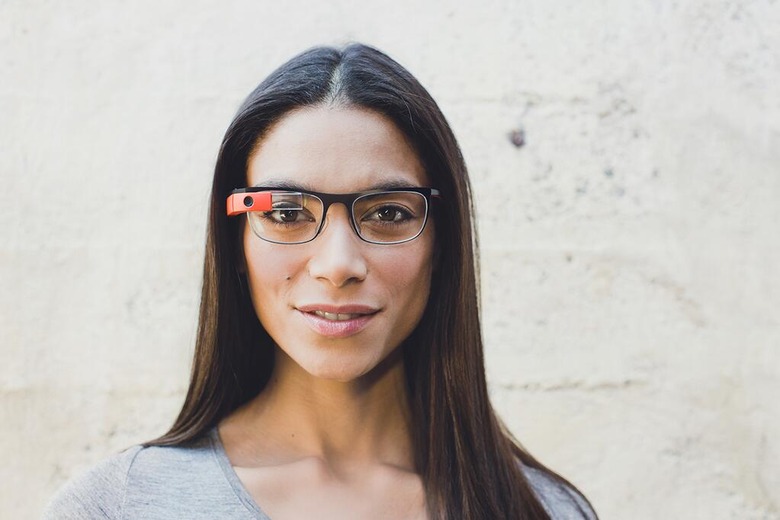Google's Glass Frames Are Pretty But Dumb
Google has finally revealed its frame options for Glass, the Titanium Collection, with four styles and the chance to have prescription lenses fitted. It addresses a long-standing complain about the wearable computer, and something Google knew it had to fix before the consumer launch before the end of 2014. Problem is, as a Glass Explorer and someone who wears prescription glasses to correct my vision, it feels like Google hasn't thought through exactly how the frames will work in everyday use.
Right now, when I want to use Glass, I have to put it on over my existing prescription frames. Luckily the two can co-exist on my nose – the pair I use are actually my spare frames, since my normal glasses didn't leave enough room for the Glass nose-pads to sit – but it's not especially comfortable, gets heavy after a while, and makes me look, well, even more ridiculous than some might say Glass does on its own.

In theory, then, I'm the perfect audience for the Titanium Collection. I don't wear contact lenses, need my vision correcting, and am used to having glasses on all day. Some have complained about the $225 price tag each of the four frames carries – that's before you add prescription lenses, mind – but I don't even see that as too big a deal. Decent frames are expensive, and I'm sure I'm not alone in having spent more on regular glasses before now.
No, what frustrates me is that the Glass Frames are effectively all-or-nothing. If I want to use Glass with them, it needs to be unscrewed from the regular headband – Google provides a little screwdriver especially for that purpose – and then screwed onto the frame. The truly modular system we were hoping for, where Glass could snap on and off a more traditional frame, simply hasn't appeared.
Even if you carried around the screwdriver, you can't properly wear one of the Titanium Collection without Glass in place. The right arm is truncated, leaving the Glass arm itself to support the frames on your right ear; take that off, and the arm is going to finish midway across your temple.

Why might I want to take off Glass? For a start there are times when wearing it isn't permitted – at a movie theater perhaps – but where I'd still like to be able to see properly. The wearable's own battery is another limitation: not yet enough to get you through a full day, which means I'll have to choose between taking off my glasses to recharge, or snaking a USB cable up the side of my face.
And then there are the times when I could wear Glass, but might choose not to. Some people still don't like the idea of you talking to them with the wearable on; even if you're not using it, they worry you're not giving them your full attention, or might be recording them, or simply find it distracting. Greater comfort around wearables – even from those who aren't actually wearing them – will come in time, but for now it's polite to be able to take Glass off and show someone I'm fully engaged.
It'd be great to also not have to squint at them while I do that, or push my face so close to them I can feel their breath so that my myopic vision doesn't get in the way.
Meanwhile, given the uncertain and rapidly-evolving attitudes of law enforcement to wearables while driving, should I be sporting Glass while I'm behind the wheel? Even if it's safe, or dormant, will I be able to convince a traffic cop of that if I'm pulled over?
There are technical challenges about making a removable Glass assembly, certainly. The bone-conduction speaker relies on firm contact with your face, which might be trickier to achieve if you had a traditional arm hooked over your ear. Google's introduction of an earbud for Glass last year might do as a workaround, though it would still be a shame to lose the simplicity of the integrated speaker.

The alternative is carrying two pairs of spectacles around with me: one Glass, one regular. That's a potentially bulky frustration, particularly given how the Titanium Collection doesn't actually fold up like a normal pair of glasses.
My lingering suspicion – particularly given how little the official frames look to have changed from the early prototypes we saw back at Google IO in mid-2013 – is that, despite the feedback from glasses-wearers, Google has taken the easiest route rather than what could have been the best one. The focus, within the Glass team, is more than likely on the consumer hardware – which Google reiterated yesterday was on track for launch before the year is out – and satisfying its previous promise to have some sort of prescription support for Explorer early-adopters was more of an empty tick-box on a to-do list.
It's unclear whether that consumer Glass will have a better system for glasses-wearers. Given the promise of more styles and eyecare provider training to get them up to speed on fitting prescription lenses to the Titanium Collection, I suspect these are the frames the mass market will get to choose from too, when their (cheaper, more refined) Glass ships. Hopefully by then, though, Google will have rethought exactly what Glass needs if everyone is to wear it and be at their most productive.
